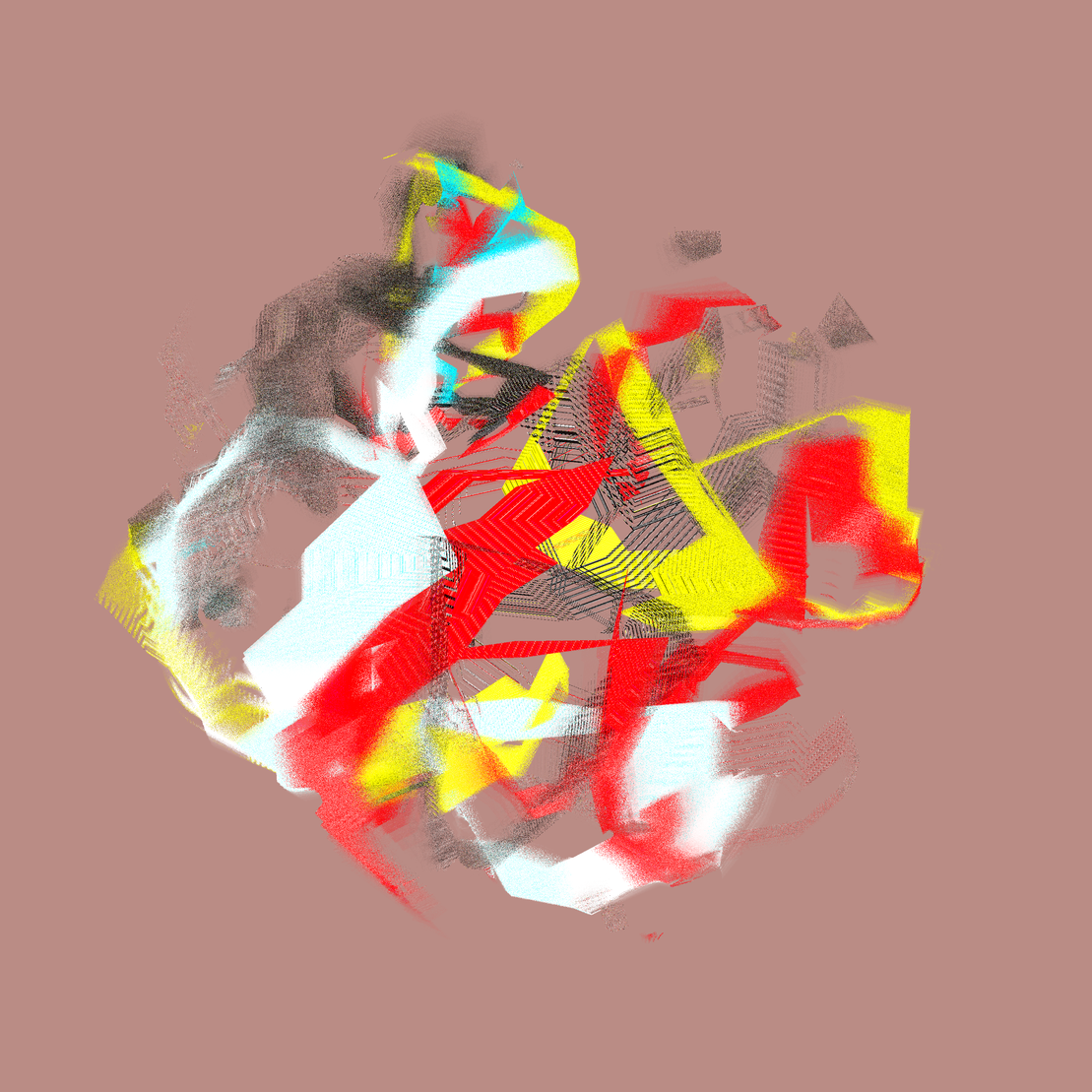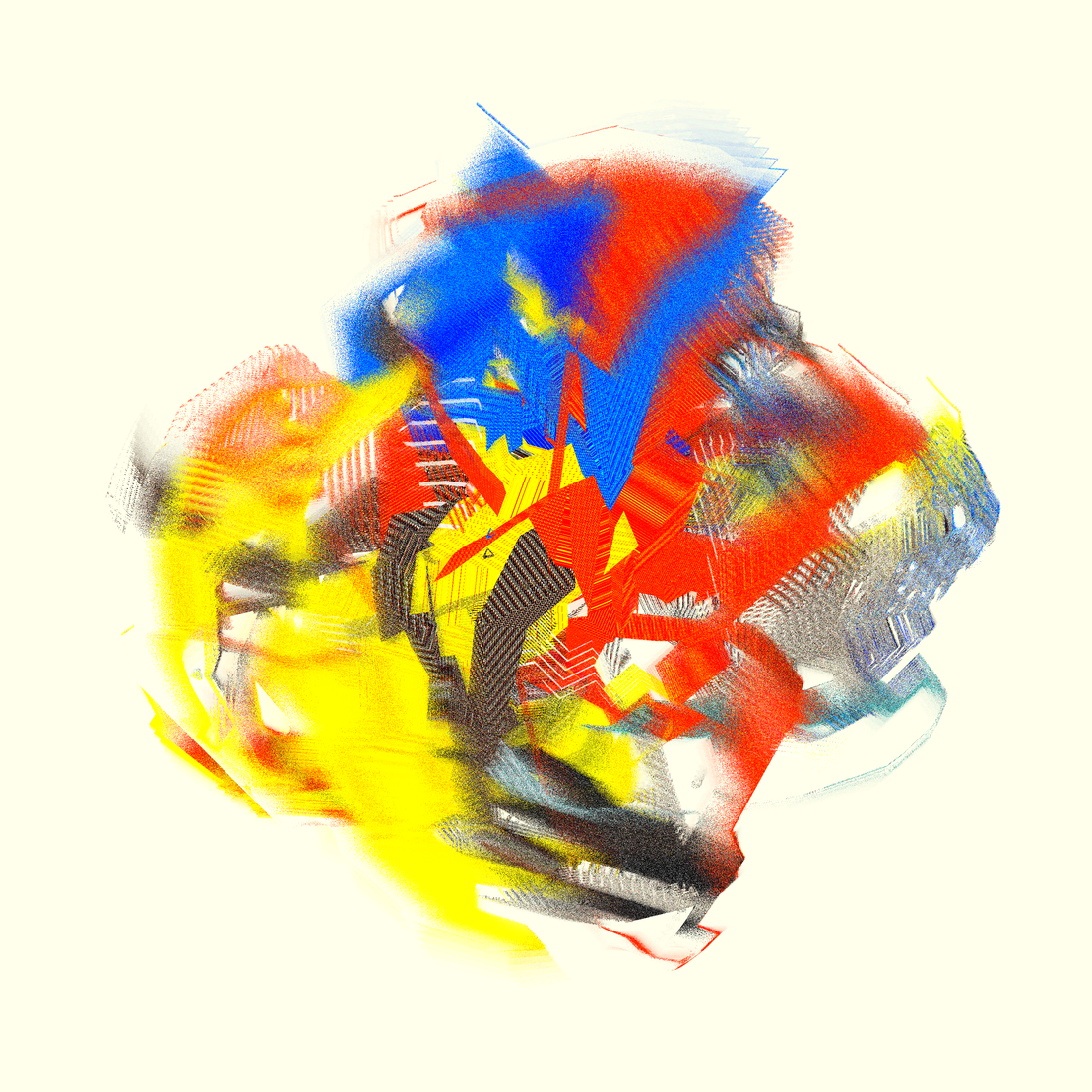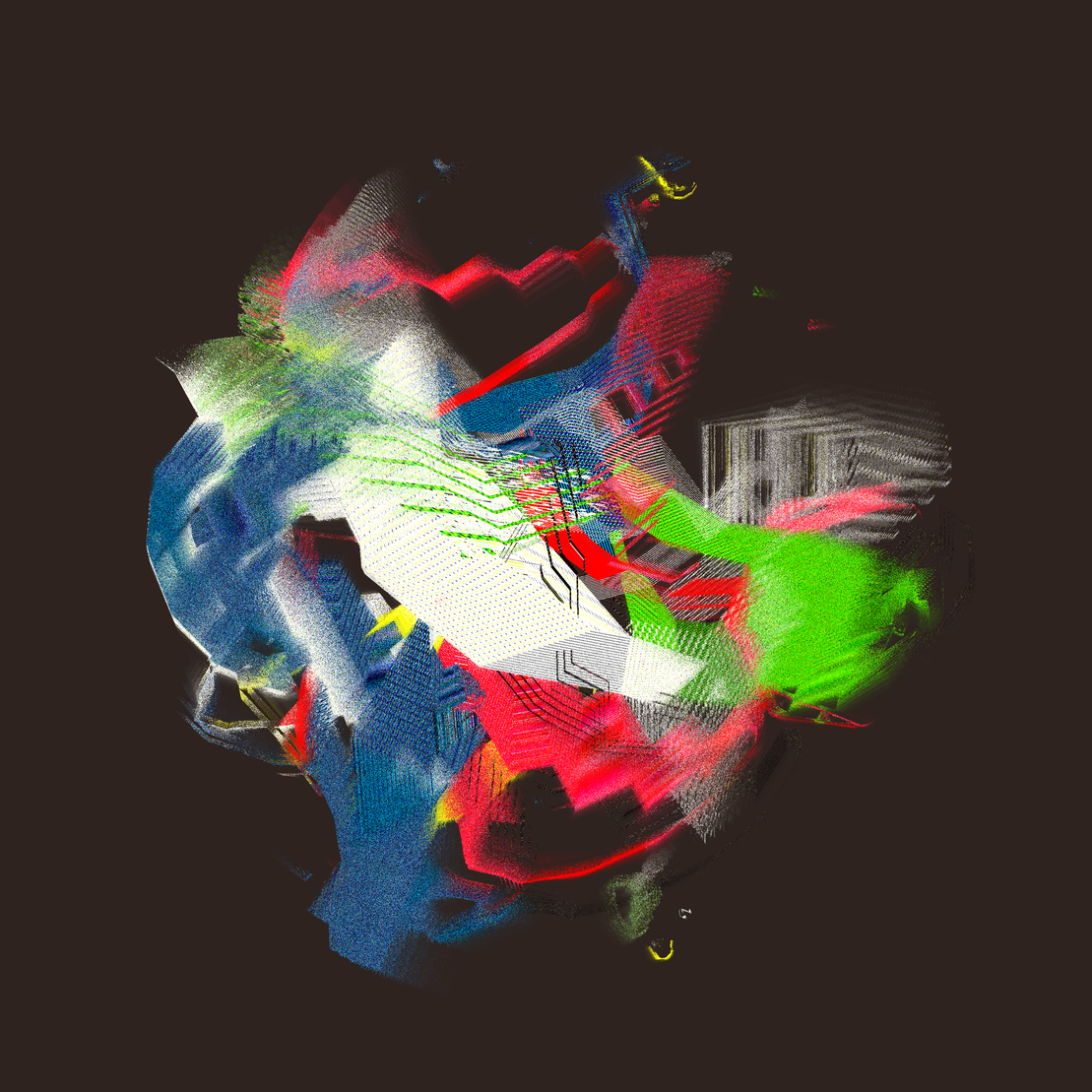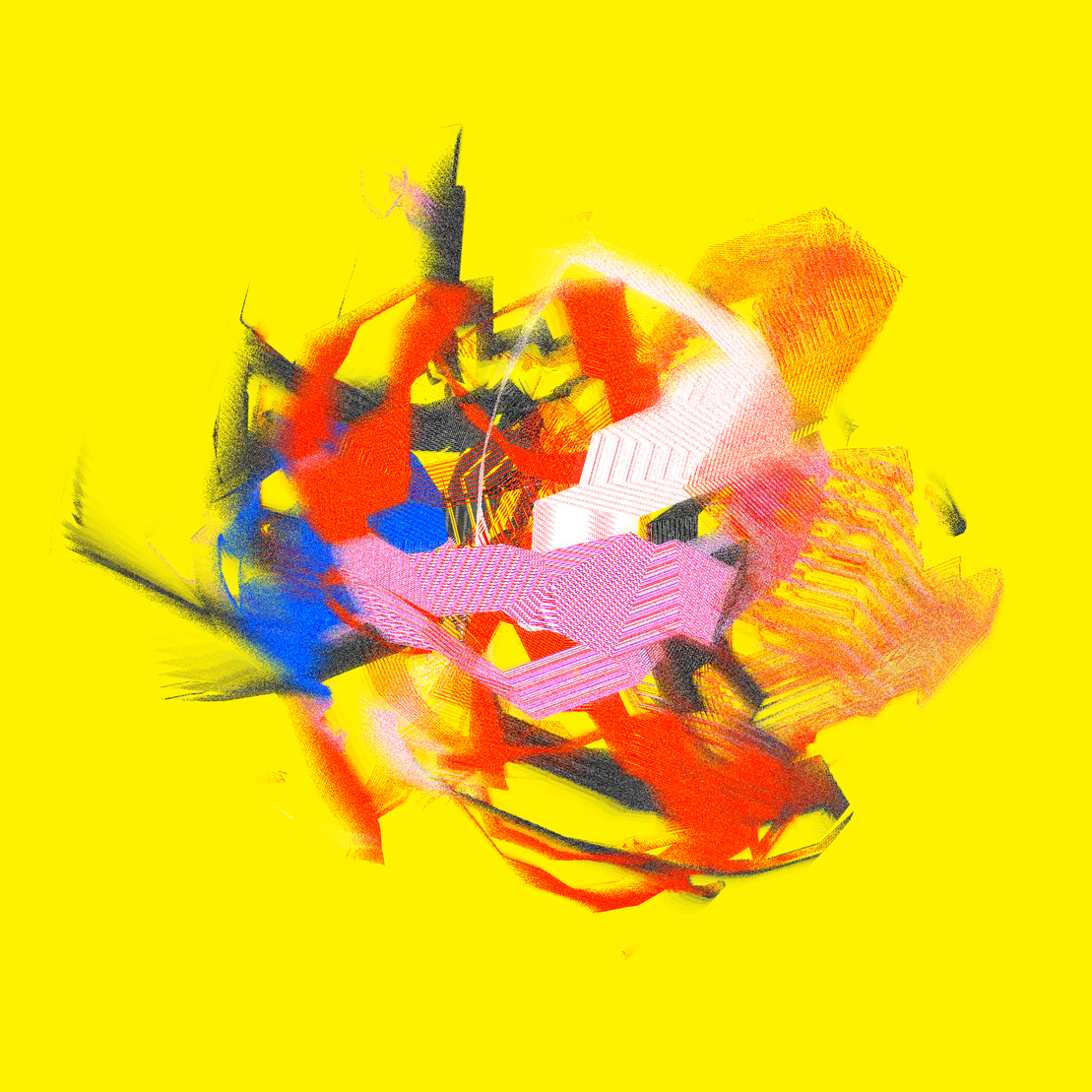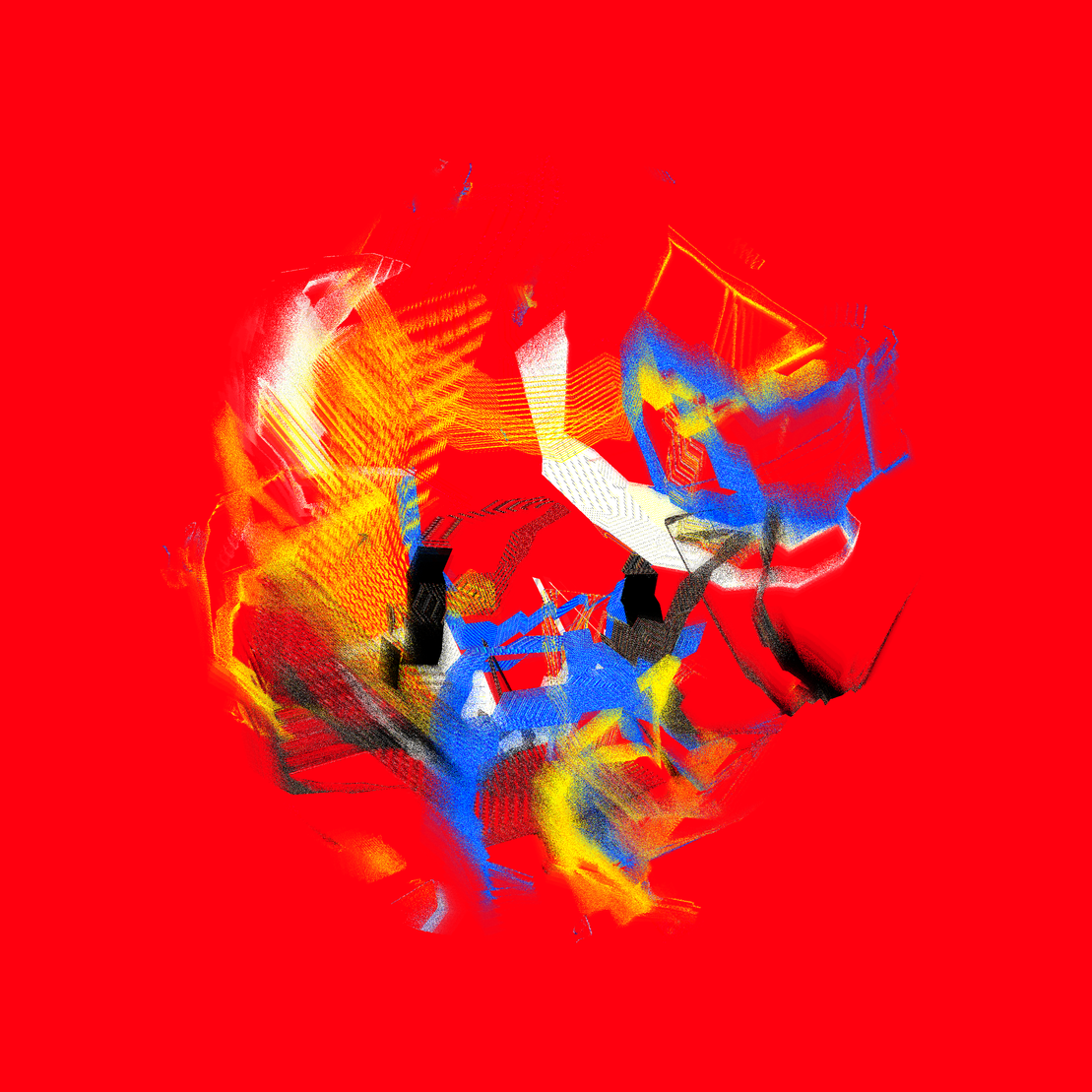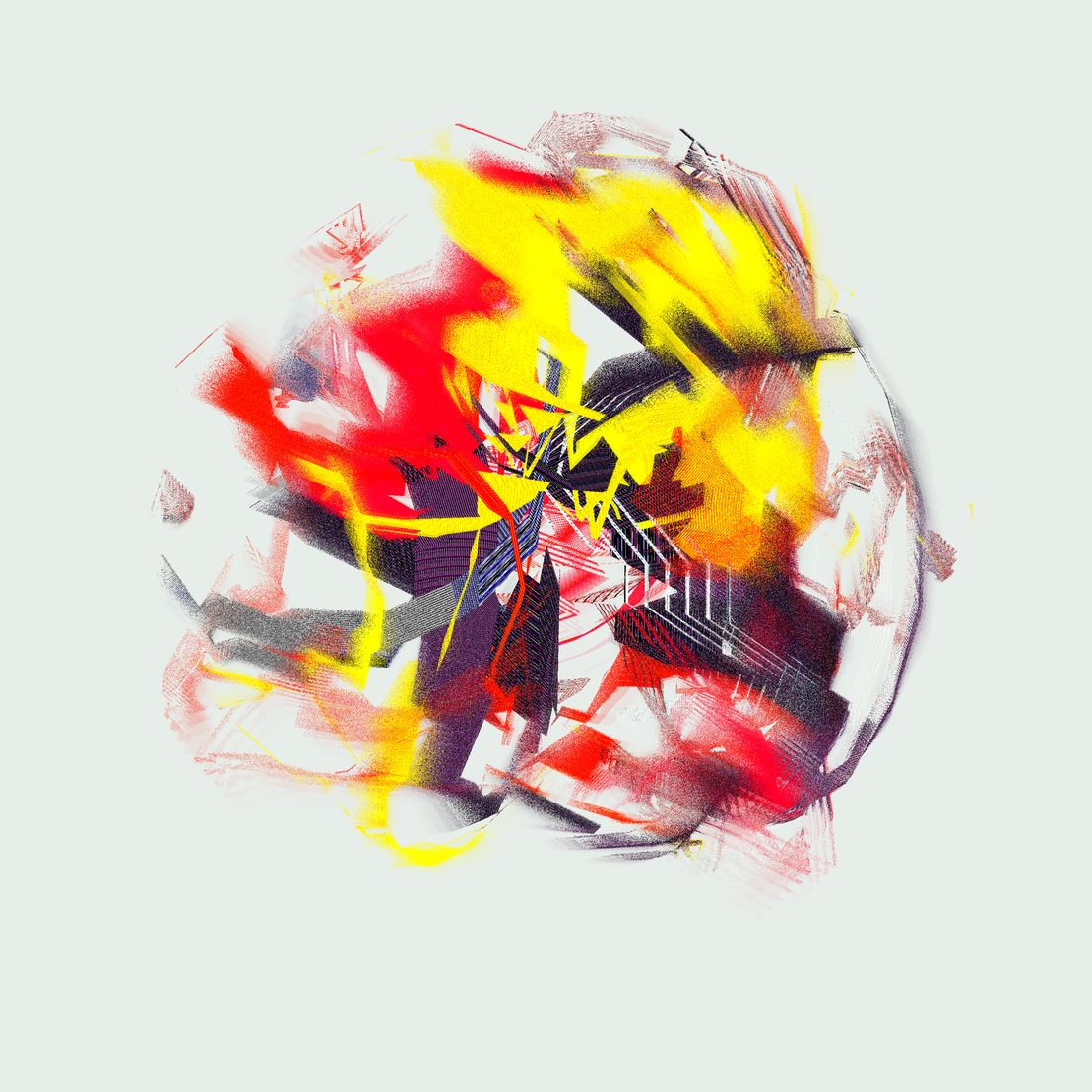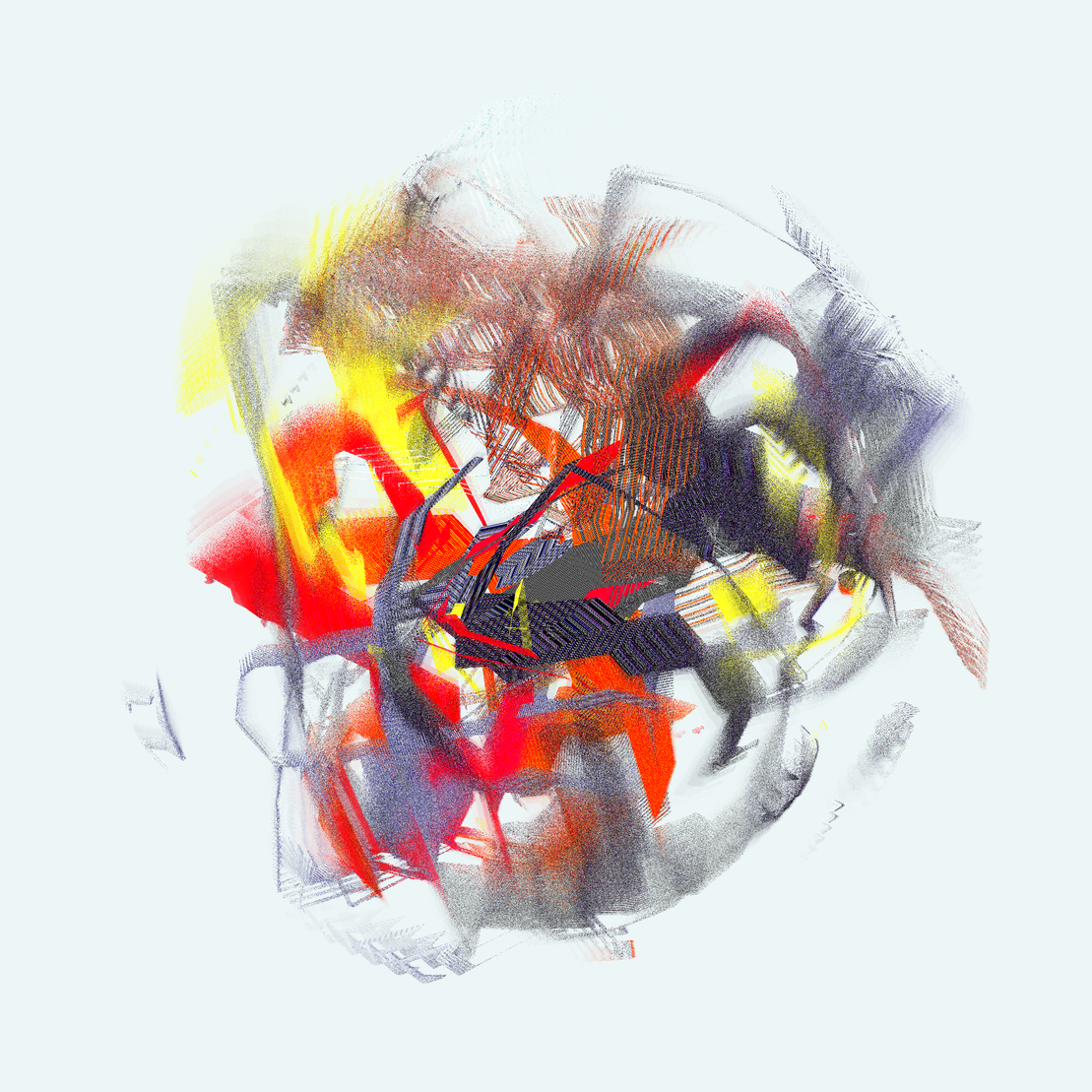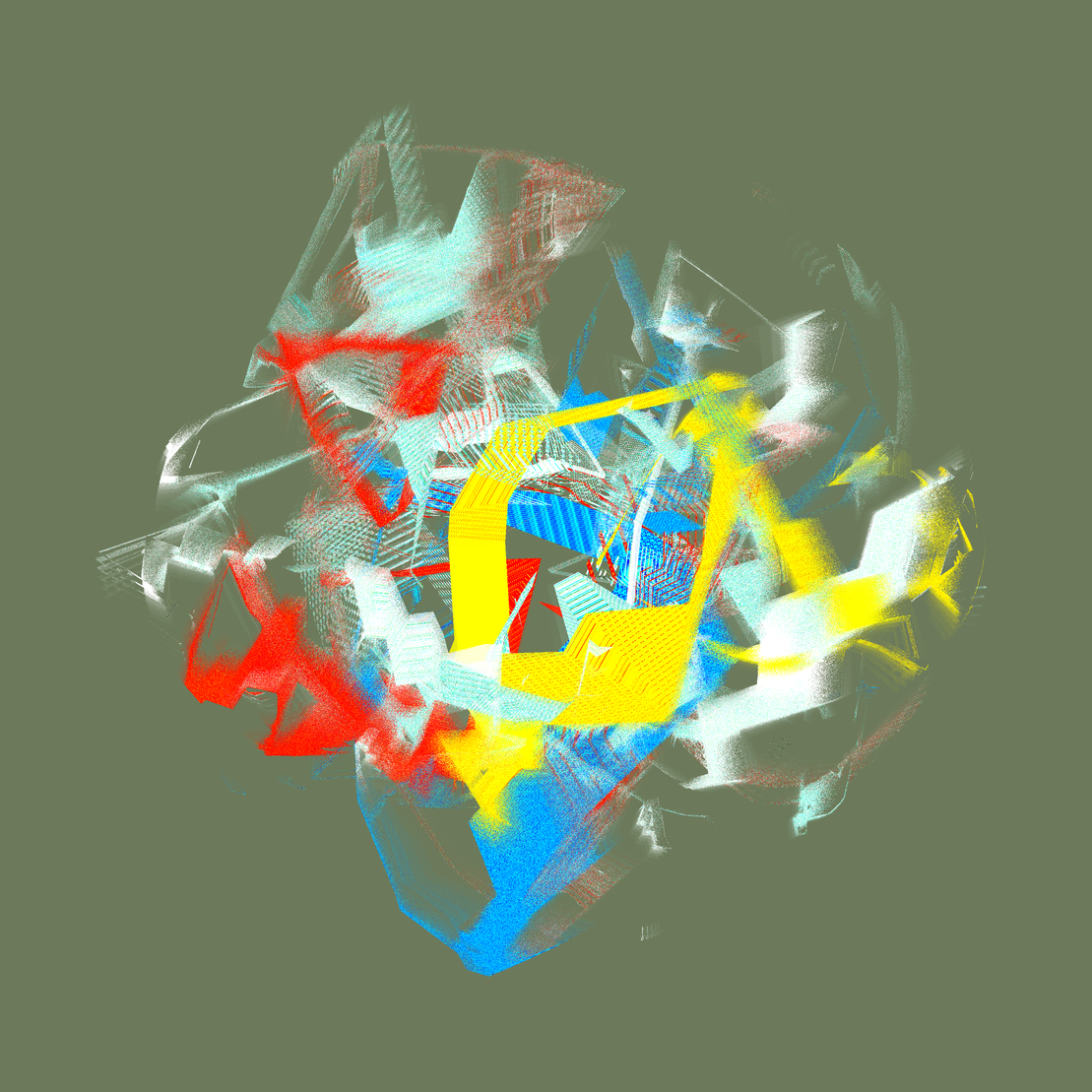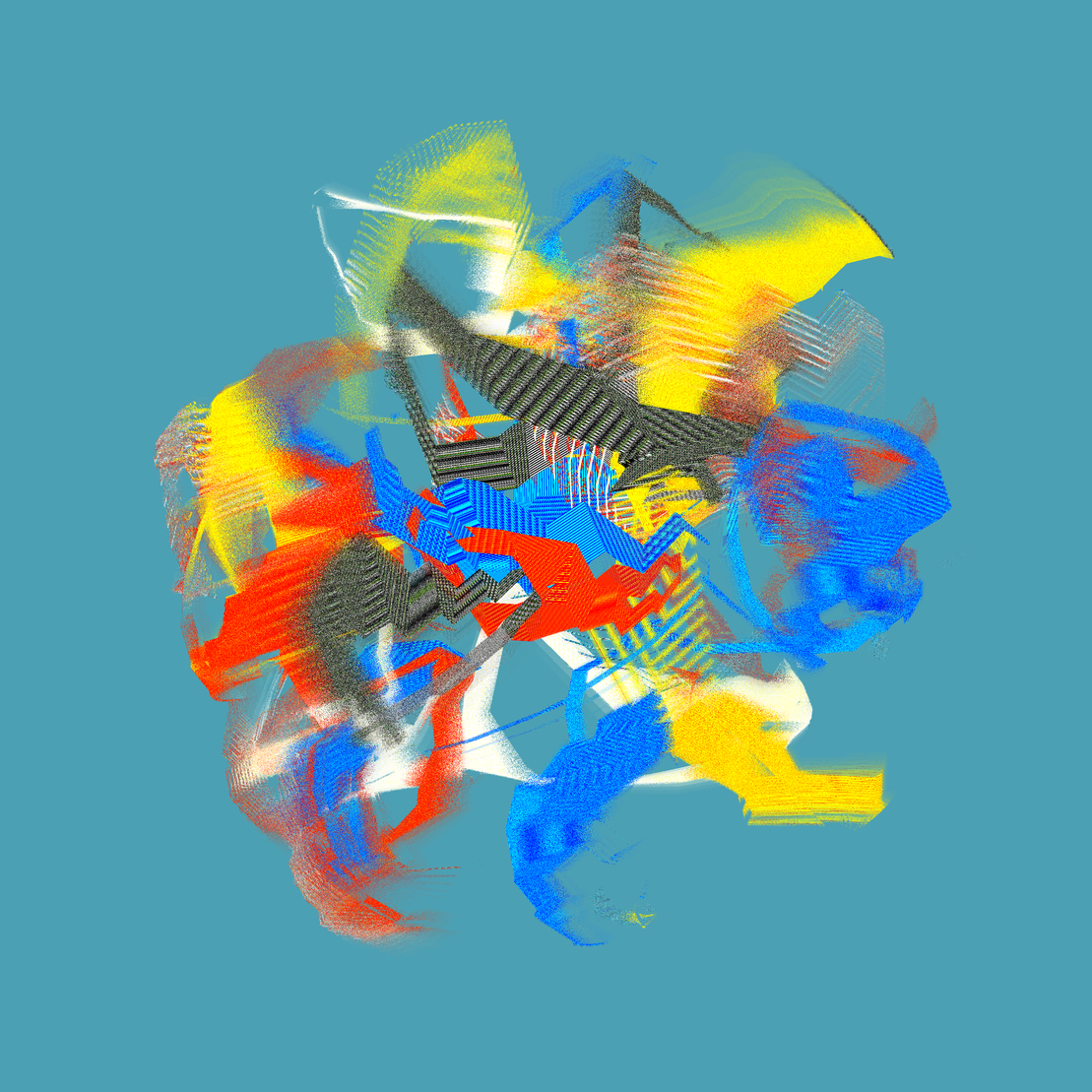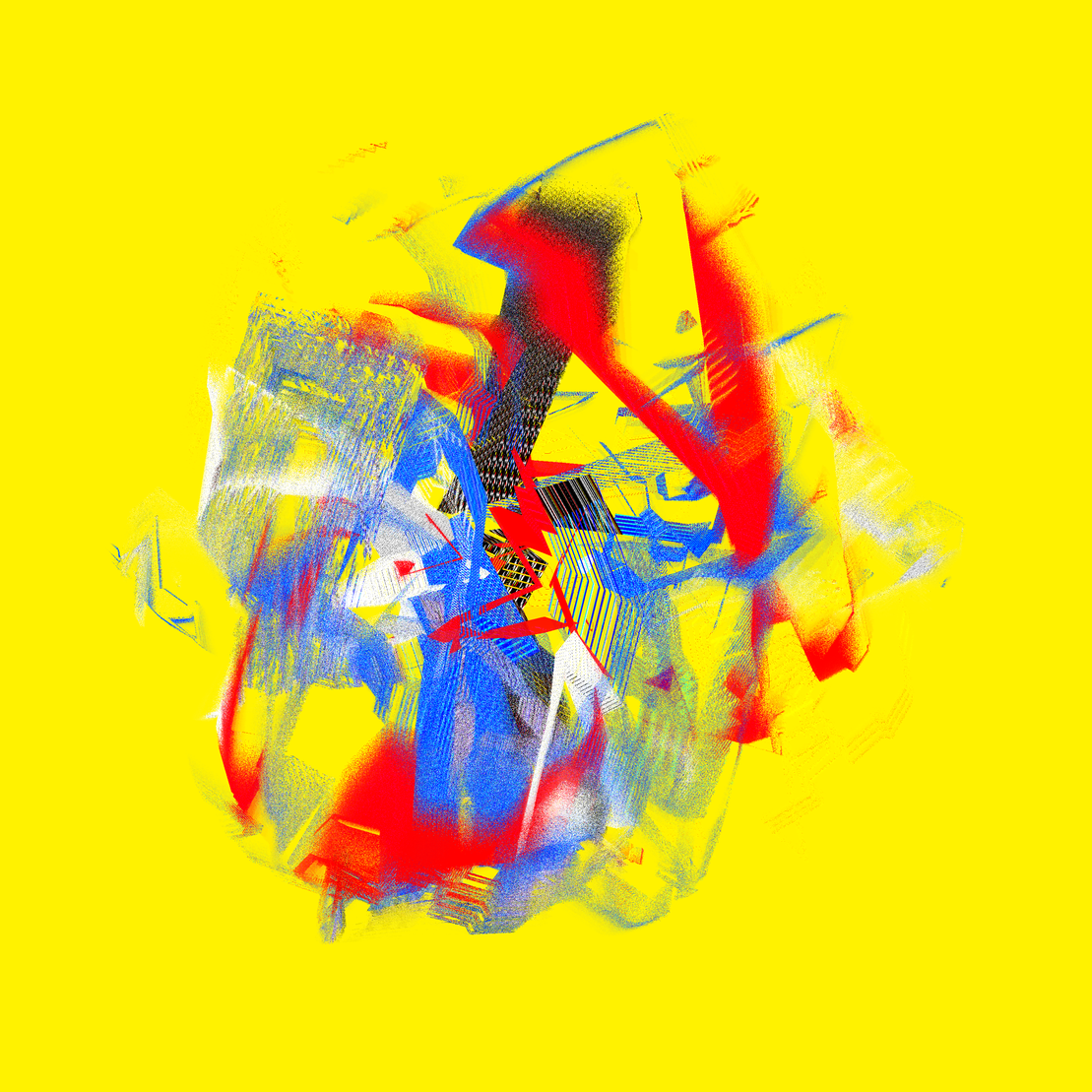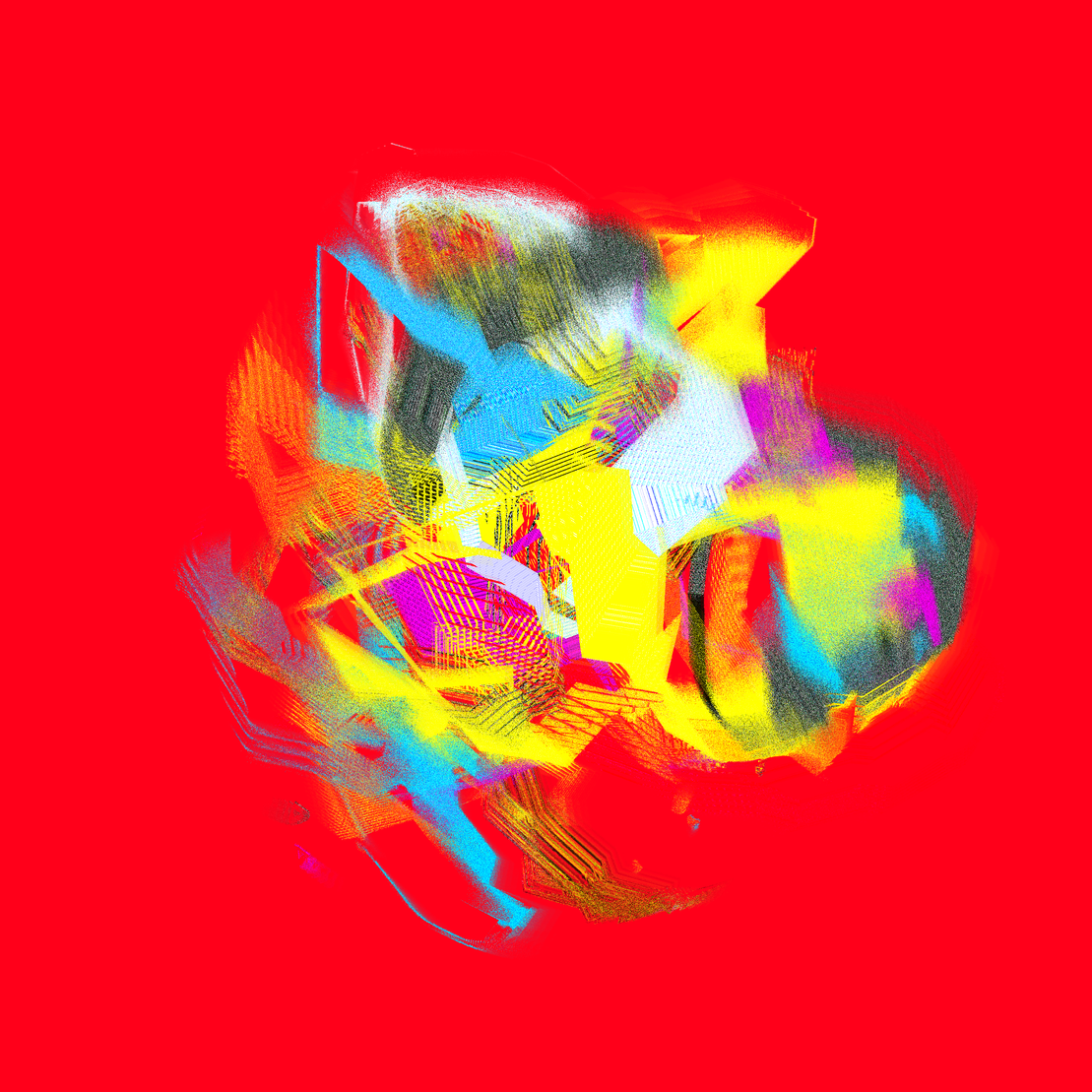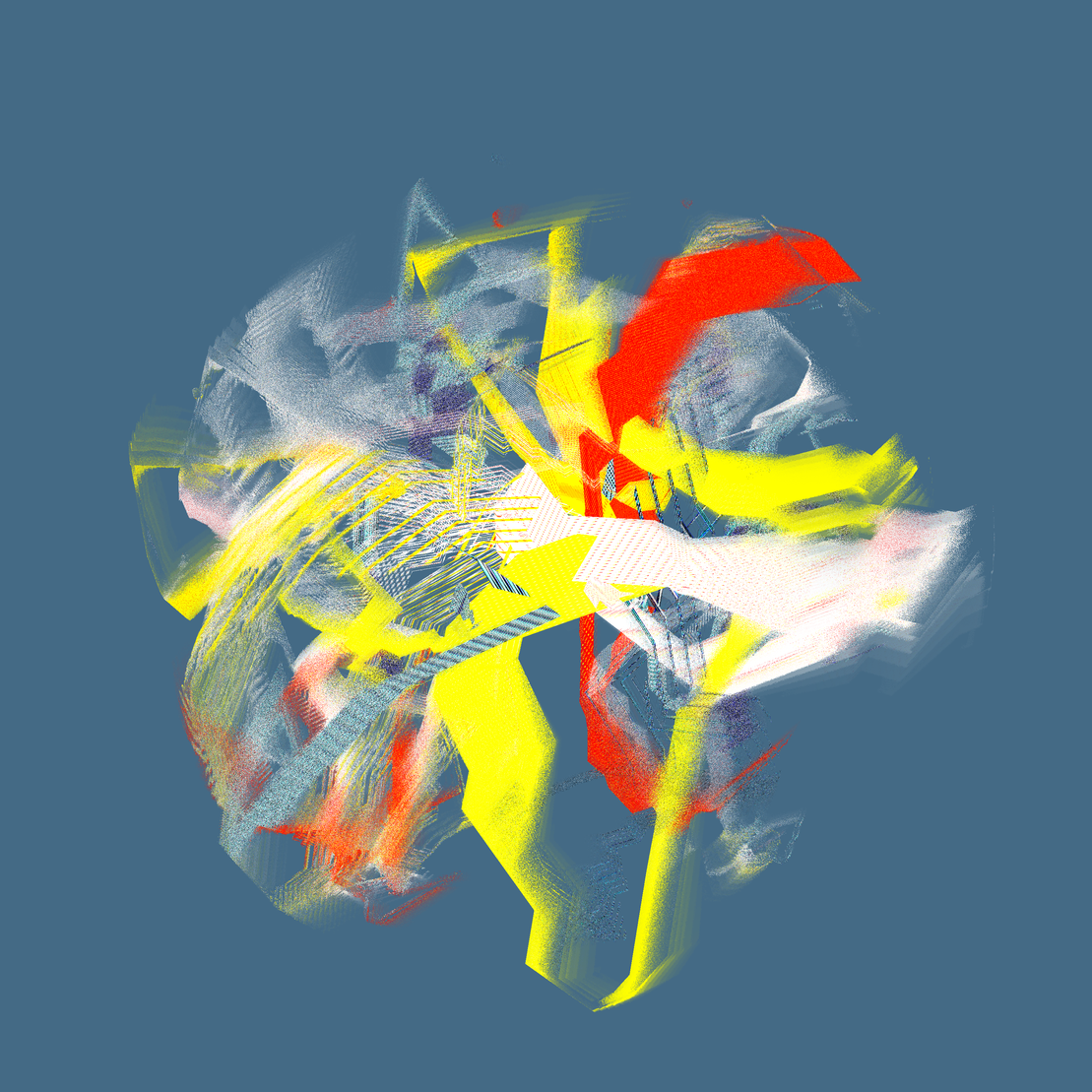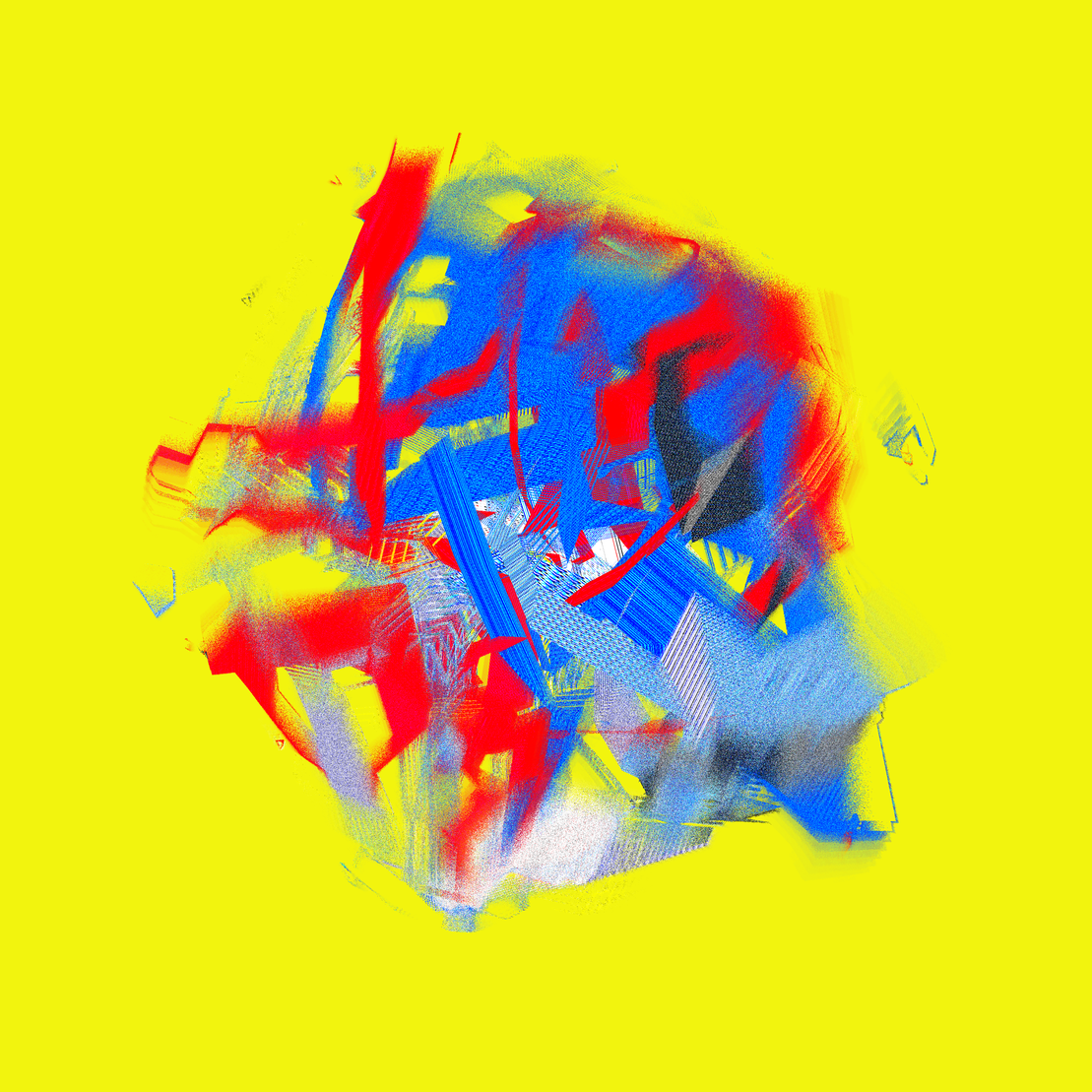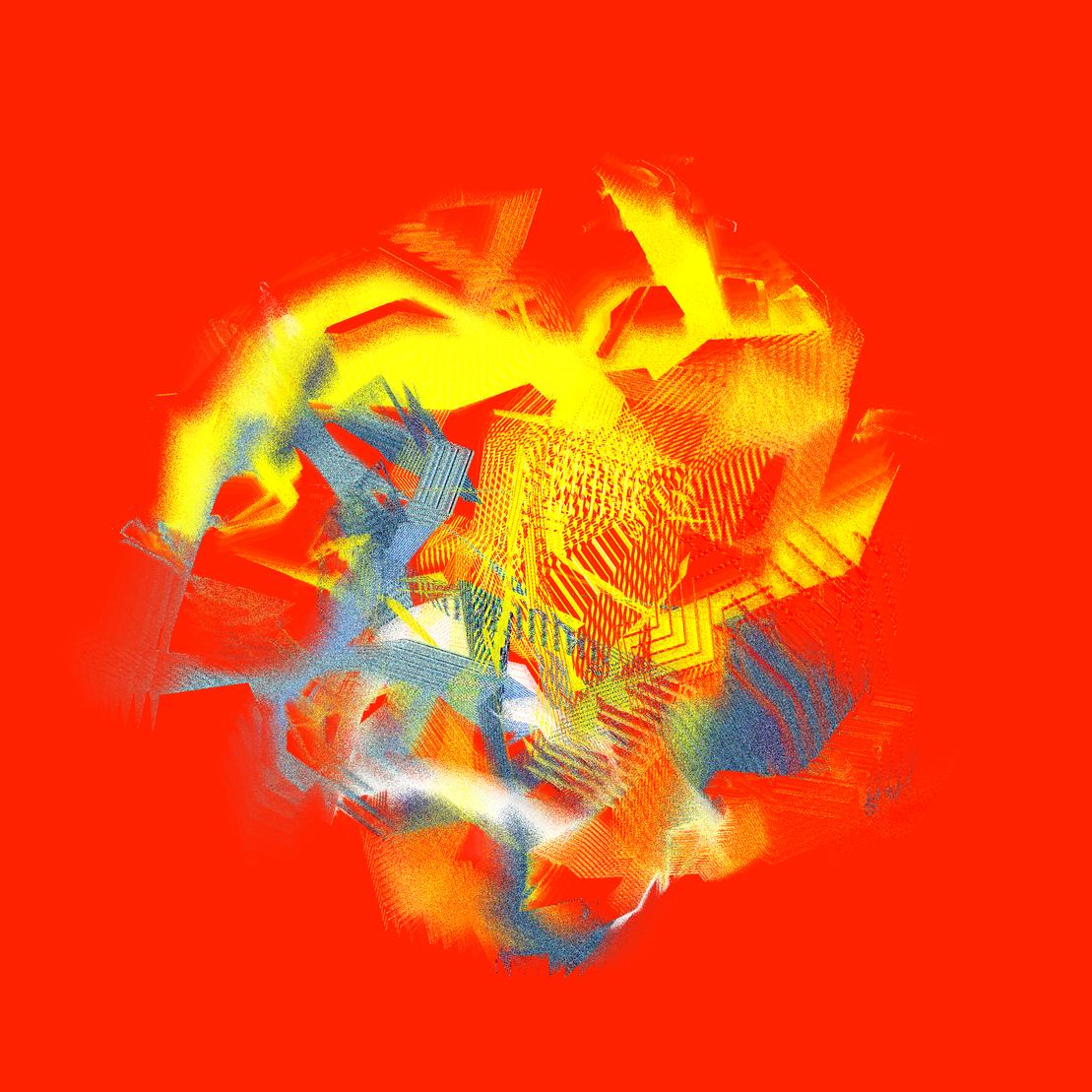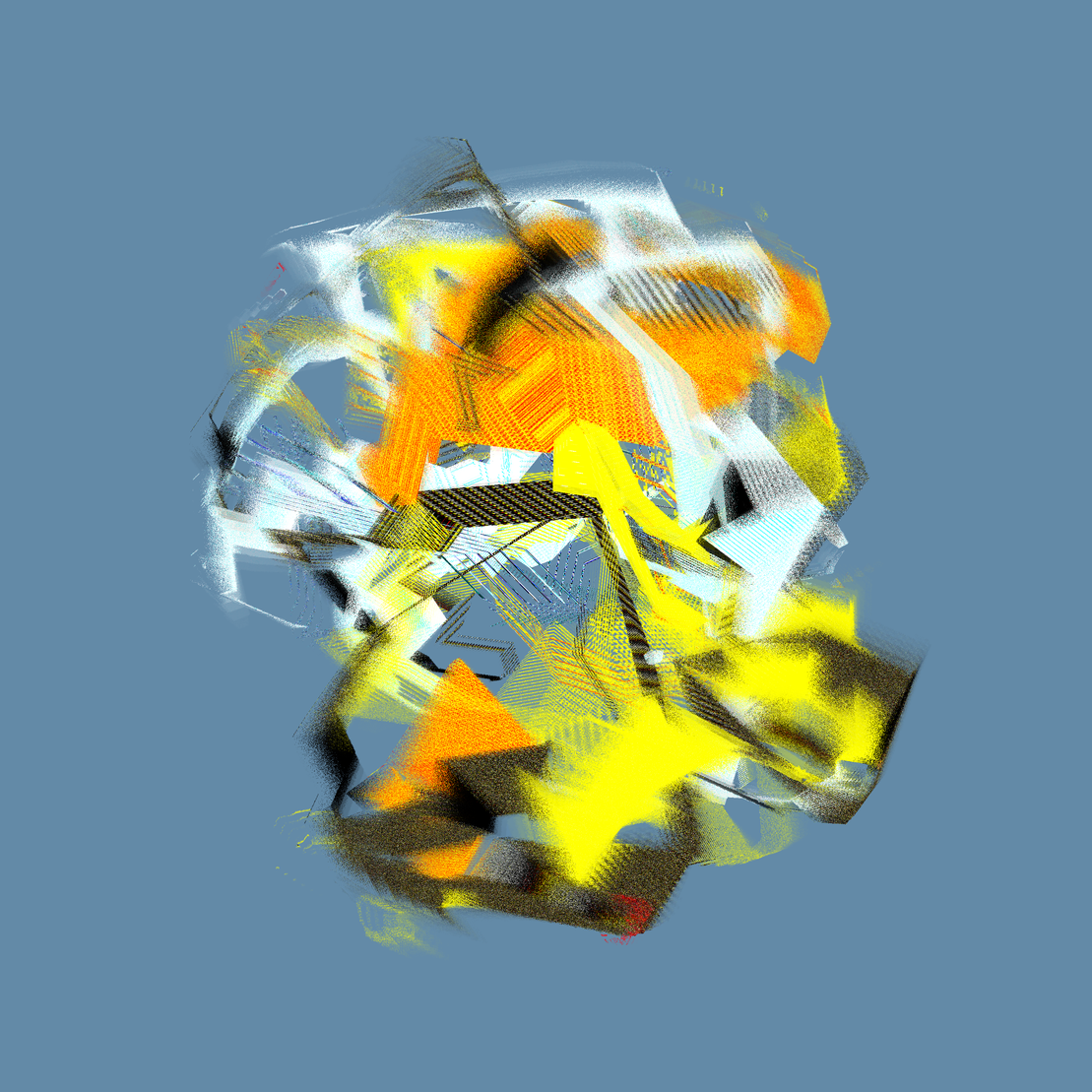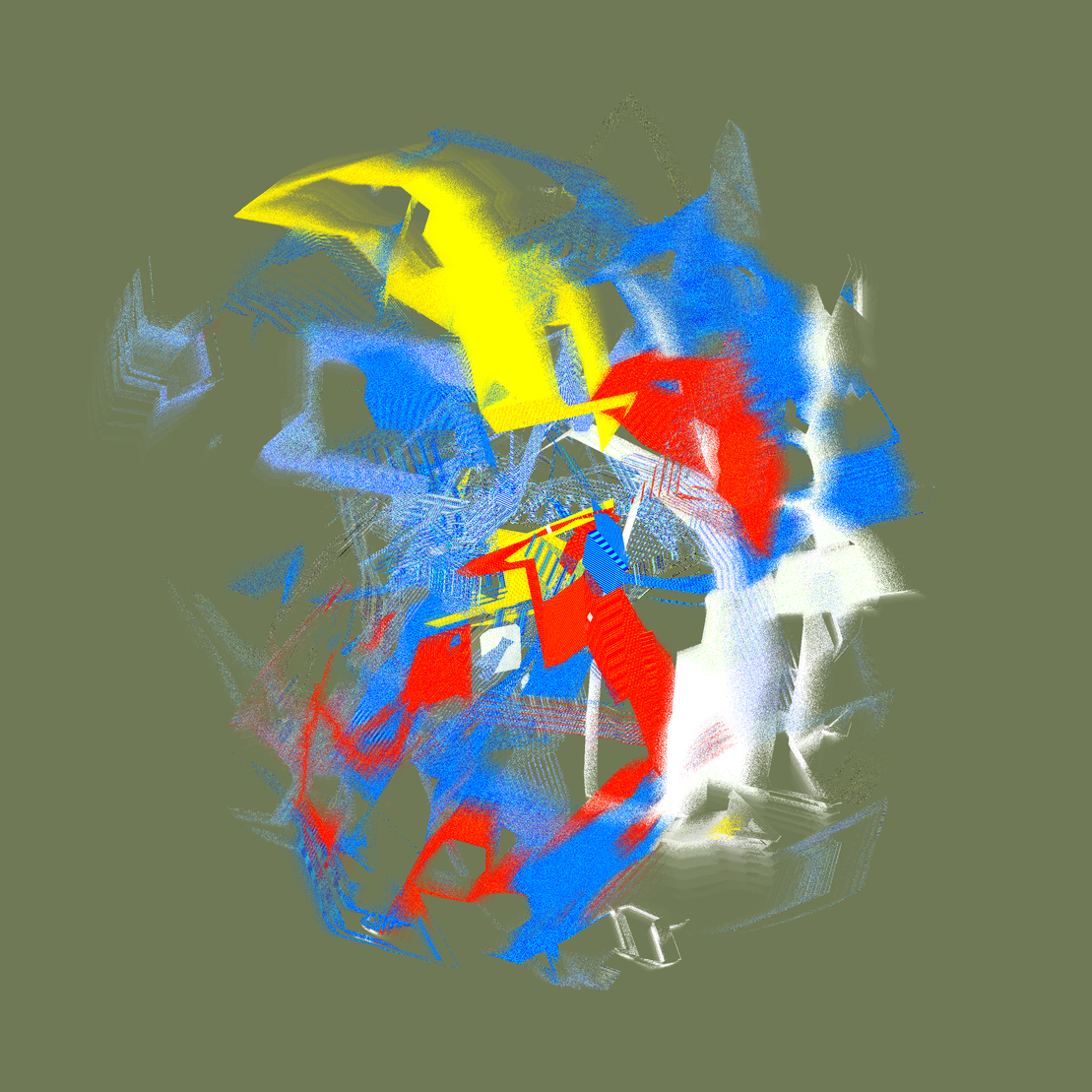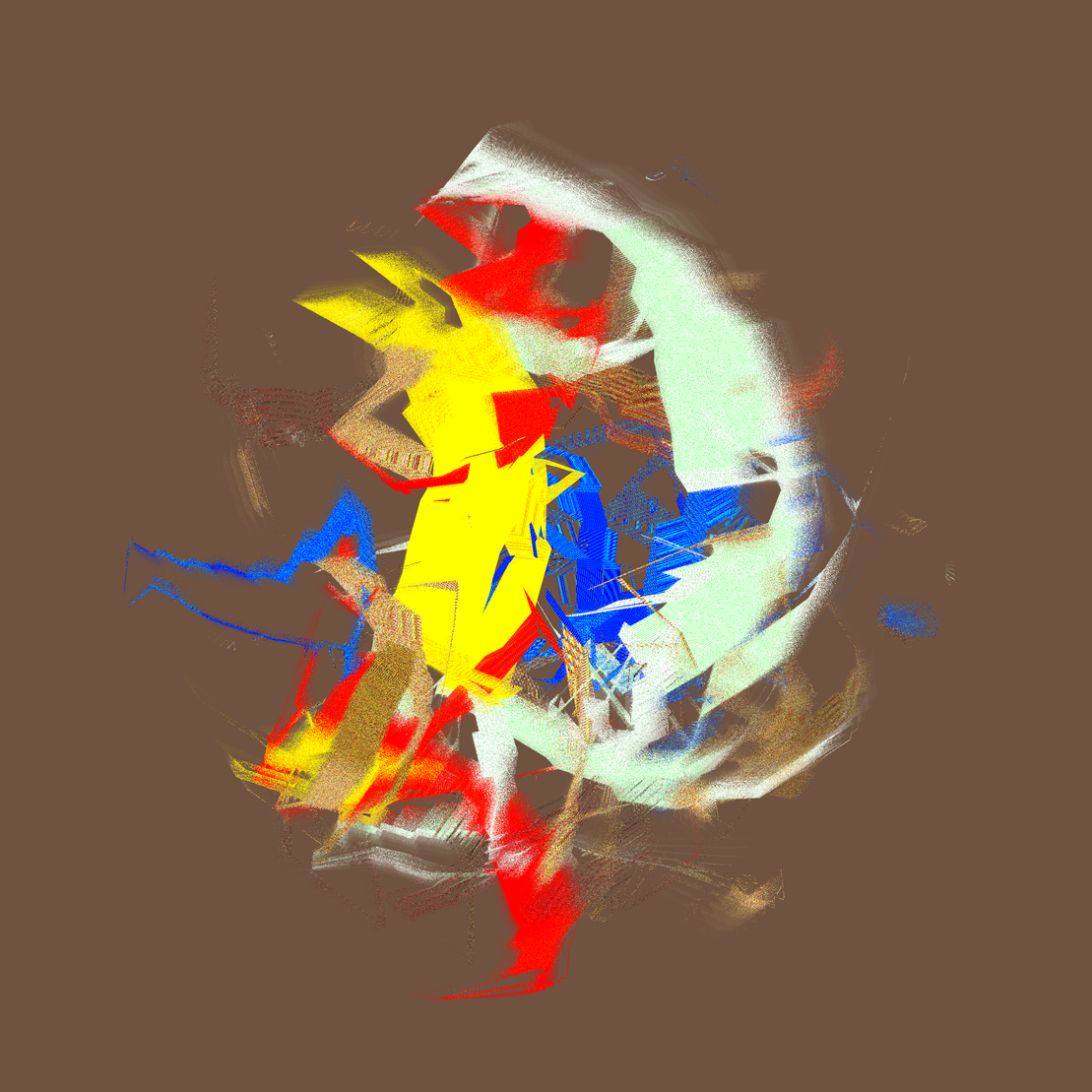price
4 TEZ77/77 minted
Project #23175
Animated
Interactive
Roll the dice with shapes and capture the moment!
Est follows Iacta which follows Alea. So here we are now: alea iacta est.
How does it work?
Each Est consists of 64 objects randomly arranged around a center and randomly differing in shape, size, texture, and movement. A curated 6 colors palette is picked and used for the textures. The color palette is sorted by hue, luminosity and/or colorfulness based on the color reference and direction variables.
The animation itself is 32 frames long and stops abruptly. It consists of 3 layers. The first layer moves the objects around the center and draws the animated objects displacing vertex positions and textures coordinates based on modulated sinus waves. Textures are additionally dithered based on a randomized fake 6x6 bayer dither matrix.
The second layer uses the first one and a double buffer to capture the motion blur based on a depth mask.
The third layer is mainly used for screen rendering, debugging and behind-the-scene looks. In addition, postprocessing is performed by shifting the drawing position based on color and center distance.
Features:
- shapes [3] (more s, more m, more l)
- palette [102] (based on YPS magazine covers (Germany), issues 700-750 / 800-850, published 1989 - 1992)
- color sort direction [2] (up, down)
- color sort reference [3] (0, 1, 2) - sorting mode selection
Animation and feature selection are based on the deterministic prng Xoshiro128 seeded with the fxhash. This allows repeated playback in the same sequence. The animation is synchronized with frames and not with time.
The preview images are taken after 32 frames.
Shortcuts & interactions:
- spacebar to trigger a rotation animation (or single click / tap)
- o to trigger random object change animation followed by a rotation animation (or double click / tap)
- r to trigger a random feature change followed by a random object change and rotation animation (or triple click / tap)
- k to enable the kiosk mode and set the speed (off, 3, 5 or 10 secs)
- m to set the kiosk mode (animate, objects, features (default), special)
- s to toggle the postprocessing screen mode (default, raw, alternative, rasterized, facetes, lineblocks, all) - experimental
- c to capture an image
- f for full screen mode
- h to see all options
Available query string parameters:
- size=8000 - sets the base size for width/height to 8000px (default 3000, useful if you want to capture bigger pngs)
- showannouncement - activates the announcement
- kioskspeed=5 - activates the kiosk mode and sets the speed in seconds
- kioskmode=animate - set the kiosk mode (animate, objects, features (default), special)
- screenmode=default - set the postprocessing screen mode (default, raw, alternative, rasterized, facetes, lineblocks, all) - experimental
- showinfo - activates the info box
Est follows Iacta which follows Alea. So here we are now: alea iacta est.
How does it work?
Each Est consists of 64 objects randomly arranged around a center and randomly differing in shape, size, texture, and movement. A curated 6 colors palette is picked and used for the textures. The color palette is sorted by hue, luminosity and/or colorfulness based on the color reference and direction variables.
The animation itself is 32 frames long and stops abruptly. It consists of 3 layers. The first layer moves the objects around the center and draws the animated objects displacing vertex positions and textures coordinates based on modulated sinus waves. Textures are additionally dithered based on a randomized fake 6x6 bayer dither matrix.
The second layer uses the first one and a double buffer to capture the motion blur based on a depth mask.
The third layer is mainly used for screen rendering, debugging and behind-the-scene looks. In addition, postprocessing is performed by shifting the drawing position based on color and center distance.
Features:
- shapes [3] (more s, more m, more l)
- palette [102] (based on YPS magazine covers (Germany), issues 700-750 / 800-850, published 1989 - 1992)
- color sort direction [2] (up, down)
- color sort reference [3] (0, 1, 2) - sorting mode selection
Animation and feature selection are based on the deterministic prng Xoshiro128 seeded with the fxhash. This allows repeated playback in the same sequence. The animation is synchronized with frames and not with time.
The preview images are taken after 32 frames.
Shortcuts & interactions:
- spacebar to trigger a rotation animation (or single click / tap)
- o to trigger random object change animation followed by a rotation animation (or double click / tap)
- r to trigger a random feature change followed by a random object change and rotation animation (or triple click / tap)
- k to enable the kiosk mode and set the speed (off, 3, 5 or 10 secs)
- m to set the kiosk mode (animate, objects, features (default), special)
- s to toggle the postprocessing screen mode (default, raw, alternative, rasterized, facetes, lineblocks, all) - experimental
- c to capture an image
- f for full screen mode
- h to see all options
Available query string parameters:
- size=8000 - sets the base size for width/height to 8000px (default 3000, useful if you want to capture bigger pngs)
- showannouncement - activates the announcement
- kioskspeed=5 - activates the kiosk mode and sets the speed in seconds
- kioskmode=animate - set the kiosk mode (animate, objects, features (default), special)
- screenmode=default - set the postprocessing screen mode (default, raw, alternative, rasterized, facetes, lineblocks, all) - experimental
- showinfo - activates the info box
Price4 TEZMinting opensJanuary 5, 2023 at 19:00(1)Royalties15.0%(1)Tags
Metadataopen in new tab (0)
webgl2
alea
iacta
glsl
twgl.js
thi.ng
interactive
yps magazine
roll the dice
short animation
bayer dither
Metadataopen in new tab (0)
Filters
Features
Listings

